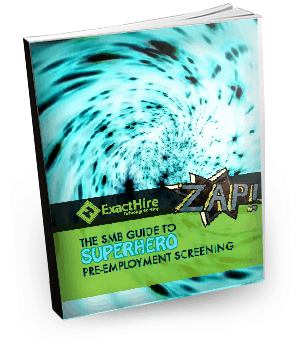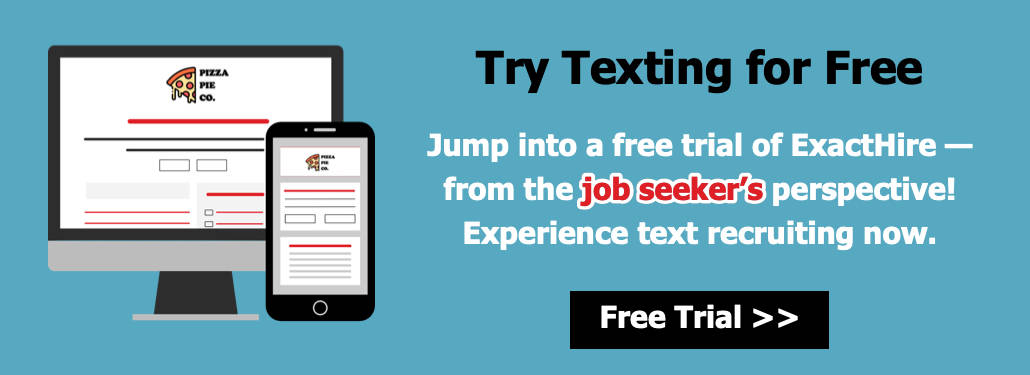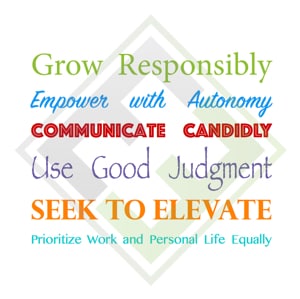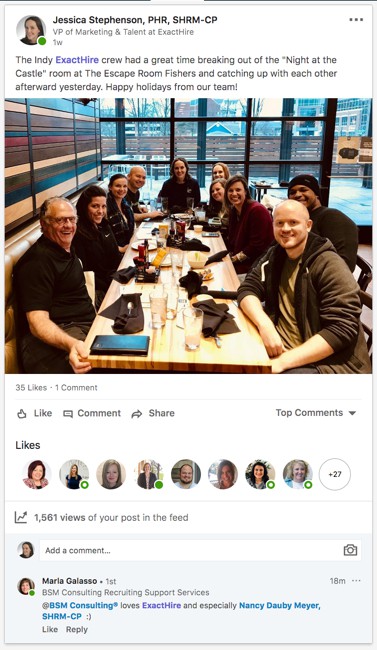What Is the Screening Process?
I imagine every recruiter experiences a twinge of dread mixed with excitement as the resumes start hitting the inbox. Somewhere in that digital pile is the best candidate for the job. But all those resumes and applications create a mountain of data to sift through. If you’re like most recruiters, you’ve probably tried a variety of ways to screen candidates. But you may have wondered if your efforts to be more efficient led to a more ineffective screening method. The following screening process steps will help you save time without sacrificing thoroughness in your search for a great new hire.
Recruitment Methods for Screening
The types of screening methods you use begin before you receive your first application. A well-written job description can help applicants self-screen, while targeted application questions can help you focus on the most qualified applicants.
Your job description is your first communication with potential new hires. Before you can write a description that will “sell” the job to your ideal candidate, you must first have a clear idea of what your ideal candidate looks like. Start by reviewing the current job description with the role’s supervisor and even coworkers. Methods for screening candidates should include a list of your ideal candidate’s attributes, such as the ability to work without supervision or to work well within teams. Then write a job description to appeal to that person. An effective job description will do the following:
- Clearly state the minimum requirements for the job.
- Describe personality requirements as appealing benefits, e.g., “work with a close-knit team to collaborate on creative marketing solutions.”
- Be upfront about undesirable aspects of the job, such as weekend hours or long hours standing.
- Include a description of the company, as well as its vision and mission.
- Avoid wording that undermines diversity efforts.
Discerning candidates should be able to tell if your company and position would be a good fit for them from the job description. You can further screen those who proceed with relevant application questions. These questions are examples of screening methods that will give you a glimpse into the candidate’s motivations and values.
- Why do you want to work for our company?
- Which of our company values do you think is most important and why?
- What skills do you want to develop in your next role?
Screening and Selection Process
Your job description and application questions will help ensure that you receive quality resumes and are the first steps in your recruitment and selection process. Your next step in the screening and selection process is reviewing and sorting those resumes. Oftentimes, recruiters feel overwhelmed with the task of manually reading applications. An applicant tracking system can help you save time without sacrificing thoroughness in your new hire search.
The ATS can scan resumes for keywords so that you can find the most qualified applicants quickly. After you review each resume, you need a way to assign a status and place it in a digital “pile.” ExactHire applicant tracking software will allow you to create custom fields to help you move candidates though the applicant funnel. You’ll know right away, without rereading the resume, whether an applicant is under qualified or not a good fit. You can place applicants in the disqualified “pile” and move on to those with better qualifications. The software will store applicant information and your hiring notes to protect you against legal liabilities.
Look for applicant tracking software that allows unlimited user logins so that you can delegate tasks and work with a hiring team. Each login should apply permissions and assign access consistent with the user’s position in the organization. Entry-level employees can manually input applicants who turn in a paper application, while managers can review resumes. You’ll create the most efficient and time-saving recruitment and selection process when you can assign tasks and communicate with stakeholders from within your ATS.
Pre-Employment Screening
Throughout your entire pre-employment screening process, be mindful of liability issues surrounding your hiring process. Be aware of whether the local area where you hire workers allows you to ask about criminal history. If you use social media to screen candidates, make a plan for how you’ll address information you may uncover that is protected from employment considerations. Review with your hiring team questions that may violate state and federal laws.
Consider using pre-employment screening tests to measure applicants’ skills or uncover their hidden personality traits. These tests can help ensure you find candidates whose values align with your company’s culture. Hiring people with qualities such as honesty, trustworthiness and a drug-free attitude can strengthen your team and help reduce employee turnover.
Also consider using background checks to verify applicant information. Criminal background checks and a pre-employment screening drug testing can protect you from fraud and costly accidents. Another example of pre-employment screening measures includes checking civil records to uncover whether an applicant has been involved in lawsuits. Verifications will assure that the applicant has been truthful on her resume. You can verify past employment as well as educational records.
Currently, federal law allows employers to use credit checks in their hiring process. But recently lawmakers have considered legislation to ban the practice. Some states have already banned the use of credit checks for employment purposes. If your company finds it necessary to check applicants’ credit, be sure you comply with the Federal Fair Credit Reporting Act. Ask the applicant’s consent to run the report and give them the opportunity to review information that influenced your decision.
Screening Questions
As you can see, you can accomplish much of your employee screening process before you speak to candidates. A concise job description and effective application questions will help you sort and organize candidates when you use a time-saving ATS solution. But at some point, you’ll need to start interviewing your short-list of candidates during your screening process for hiring.
Before you pick up the phone, prepare a list of questions for screening and evaluating candidates. Every applicant should receive the same questions. Your interviewers should have a clear set of criteria for documenting and scoring answers. A structured interview applied consistently for all candidates is one of your most effective tools in your employee screening process.
Since the first pyramid needed an architect, recruiters have grappled with the screening process for hiring. Knowing which interview questions to ask is one of the toughest steps of the selection process. But instead of asking candidates trendy, but useless, brainteaser questions, like “how many golf balls will fit in the Great Pyramid?” develop questions that actually help you find the best new hire.
Start by identifying the problems your new hire will face on the job and ask the candidate what steps she would take to solve it. Develop a few questions directly from the candidate’s resume. Ask her the steps she took to achieve a specific accomplishment. Ask how she plans to succeed in the role. Many roles within an organization may never have direct contact with end users. Asking your potential new hire how the position directly impacts customers will help you determine if the he understands how he would influence the company’s success.
Phone Interview Questions
Phone conversations are your most efficient and effective solution for first-round interviews. But interviewers often make the mistake of conducting phone interviews much like they do in-person interviews. Take into account the phone’s unique benefits and shortcomings when developing screening interview questions.
Silence is more awkward on the phone than in person. When speaking to someone in person, you can read body language to fill in the gaps in conversation. As a result, many people compensate by talking more when on the phone. While you don’t want your applicant to feel uncomfortable, avoid being overly personal to convey friendliness. Instead try speaking with a smile. Your tone will be friendly while keeping the conversation focused on the job.
Set a time limit for the phone interview. Remember, the applicant can’t read your body language either. He may overcompensate by over-explaining his answers. Start by letting the candidate know the phone call will take about 30 minutes. He’ll likely give more concise answers, and he’ll know when it’s time to wrap things up.
Remember, a level of transparency will improve your candidate’s experience. Even disqualified candidates can impact your company’s reputation. If you decide during the phone interview that the candidate is not a good fit, politely and respectfully let them know. Or let successful candidates know to expect a follow-up phone call to schedule an in-person interview.
Final Thoughts
You shouldn’t have to choose between saving time during your pre-employment screening process or conducting a comprehensive search for the best candidate. Creating a screening strategy that begins with your job description and includes structured interview questions will help you tame the hiring process chaos while uncovering the best applicant in a mountain of resumes. ExactHire’s applicant tracking software can help you save time while creating a more effective screening process during each stage of your new hire search.
Photo by Darrin Henein on Unsplash







